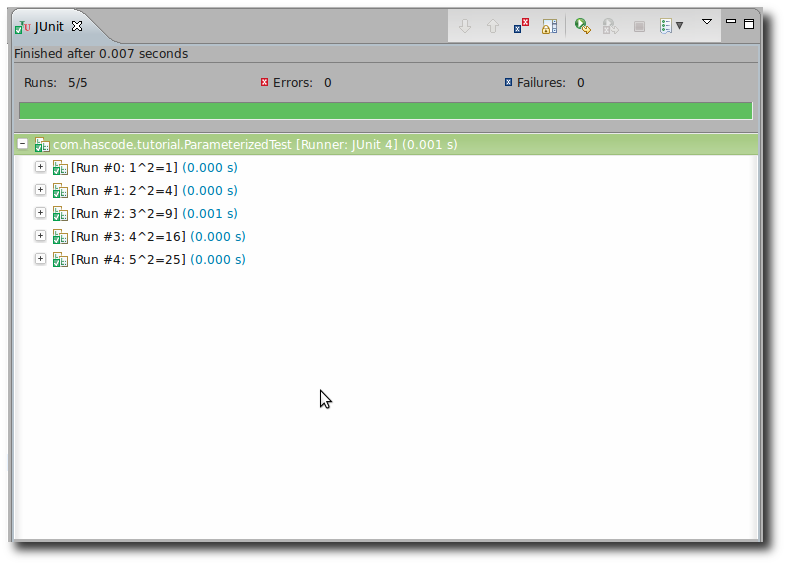

- SEQUENTIAL TESTING PARAMETERIZED JUNIT HOW TO
- SEQUENTIAL TESTING PARAMETERIZED JUNIT INSTALL
- SEQUENTIAL TESTING PARAMETERIZED JUNIT LICENSE
SEQUENTIAL TESTING PARAMETERIZED JUNIT INSTALL
To install TestNG, you can use the following command: To make sure your tests are designed to run efficiently, follow the steps below to set up TestNG on your machine: Install TestNG
SEQUENTIAL TESTING PARAMETERIZED JUNIT HOW TO
This section covers all the details regarding how to install and configure TestNG on your eclipse IDE. Also read : iOS Automation Testing - Top Frameworks How To Install TestNG in eclipse and Configure TestNG

JUnit does not have built-in support for data-driven testing, but some third-party libraries can be used to achieve this. JUnit also provides some reporting features, but they are not as robust as the ones in TestNG.ĭata-driven testing: TestNG allows you to easily parameterize your tests, which is helpful for data-driven testing. Reporting: TestNG provides flexible reporting features to help debug tests or provide information to stakeholders. Parallel testing: TestNG supports parallel testing, which allows you to run multiple tests simultaneously. TestNG provides built-in support for assertions, while JUnit does not. For example, the annotation in TestNG is used to identify a test method, while the annotation in JUnit is used to configure how the test should be run.Īssertions: Assertions are used to verify that a specific condition is true. JUnit also uses annotations, but the annotations have different names and serve different purposes. In this section, we'll look at some of the key differences between TestNG and JUnit:Īnnotations: TestNG uses annotations to identify tests, set priorities, and configure other aspects of how the tests should be run. Although JUNit is a far older framework than TestNG, certain shortcomings of JUnit made TestNG come into the market. JUnit is a popular testing framework often used in conjunction with TestNG. In TestNG, we can group our methods together into groups with specific priorities for each purpose - for example: high/medium level checking versus low-level ones like logging exceptions or returning true conditions. Comprehensive coverage: TestNG helps you write better, more extensive tests.Ease of use: TestNG is designed to be more user-friendly, as it defines dependency between one method on another (so if a failure occurs in the middle).Flexibility and extensibility: TestNG is more flexible than other frameworks, and it provides features that make it easier to It allows you run parallel execution of tests.Some of the key benefits of TestNG include:

TestNG is a powerful testing framework that offers several advantages over other frameworks, such as JUnit and NUnit. Also check : What Are The Different Types Of Test Automation Frameworks? Why use TestNG? TestNG is designed to be more flexible and extensible, and it provides features that make it easier to write and run tests.
SEQUENTIAL TESTING PARAMETERIZED JUNIT LICENSE
TestNG is an open-source project and is released under the Apache License 2.0. JUnit inspired him, and he wanted to create a more flexible and powerful testing framework. In this guide, we'll look at some of the critical elements of TestNG and how to use them to write better tests.Ĭedric Beust created TestNG in 2004. TestNG testing framework is one that offers several advantages over other frameworks, such as JUnit and NUnit. In this guide, we'll look at some of the key features of TestNG and how to use them to write better tests. It offers many features including annotations, parameter injection, and built-in support for grouping tests. TestNG is a robust testing framework that helps you write comprehensive tests with ease.


 0 kommentar(er)
0 kommentar(er)
